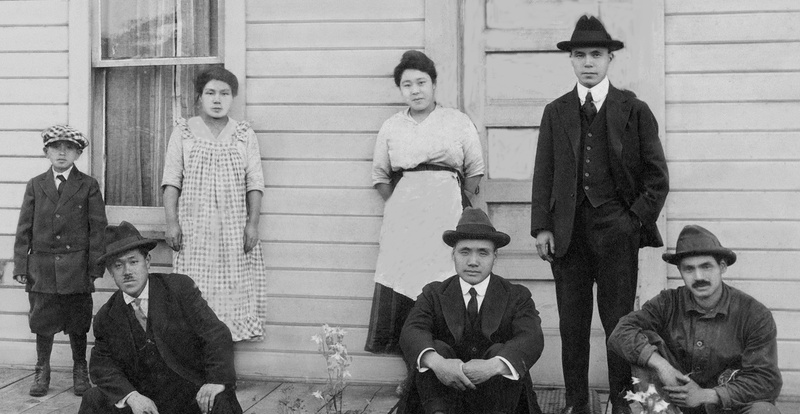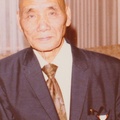When I was a little girl, Minoru Tamesa was, to me, the quiet man who came to Thanksgiving and Christmas dinners. The holiday meals were held in our home in the South Park neighborhood of Seattle after we got out of the World War II incarceration camps. I’m sure Minoru’s father, Uhachi, came with him, but I don’t remember Uhachi from those dinners. I do, however, remember the incomparably beautiful and delicious peaches he gave us—huge, golden, orange-and-red-hued globes of succulent peach sweetness grown in the Tamesa orchard. Their orchard was located in Sunnydale, close to the city of Burien. I have not tasted peaches as wonderful as those Tamesa peaches, worthy of Momotaro, since the days when the Tamesas came to dinner.
As I grew older, I learned from Mom and Dad that Min—or Minola as they sometimes called him—refused to be drafted out of the incarceration camps that were set up as a result of President Roosevelt’s Executive Order 9066. While my family and I were sent to Minidoka, Min ended up at Heart Mountain. I knew that he was sent to the US Penitentiary at Leavenworth for refusing the draft, but mostly what I remembered about him was that he was very quiet. He looked much older than my father, though I know now he was only about five years older than Dad, and he always looked very tired.
In the only conversation I can recall having with him, he told me he liked listening to opera and especially enjoyed the voice of Roberta Peters. A brother remembered that Min liked watching football games on those visits, and that he was an astute observer of the game. When he came to our house for those holiday dinners, he was always dressed in workman’s clothing; he had a job at the Olympic Foundry, a Seattle company that is still in business today.
I wondered why Min was invited to those holiday dinners. He wasn’t a relative, he wasn’t married, and he seemed to have no close connection to our family. Mother just shushed me when I asked her about it. I heard other fragments of information about him—that he had been a promising student and that he, like Father, had been active in judo. But I could see nothing of judo or intellectual brilliance in the extremely reserved, rather somber man who came to our Thanksgiving and Christmas dinners. I knew that Min worked very hard at his job and in his father’s orchard.
Min died of leukemia in 1964, around the time I got married, and I forgot about him. Once, Mother mentioned that Min’s father had set up scholarship funds in Min’s name. I never asked why.
Though I had watched Conscience and the Constitution, an excellent 2000 documentary about the Japanese Americans at Heart Mountain who refused the draft, written and directed by Frank Abe, my impressions of Min always reverted to those early ones from my childhood. Now, as an old woman, I understand that Min was invited to dinner at our house out of friendship and respect.
© 2017 Susan Yamamura






